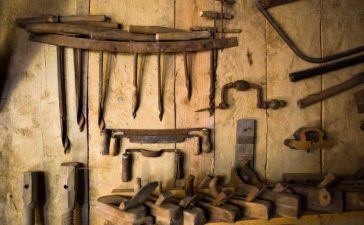
Computer numerically controlled CNC Frees machines are also known as milling machines that are controlled by digital signals from electronic meters. The two have essentially the same milling method, and they also have some structural similarities. Both CNC milling machines with and without tool magazines are available. The term “CNC machining center” also refers to the CNC milling machine with tool magazine.
Stages in CNC Milling Machine Operation
- Return to the starting spot
- Position the workpiece on the machine table, then move the table to the center of the machine (push the negative key to prevent overtravel).
- Align the workpiece using a dial indicator, then clamp it; if you’re using flat-nose pliers, you’ll need to adjust the jaws first. If the workpiece allows, you can mill it after clamping.
- To set the tool in the X direction, first rotate (press) it to the right end of the workpiece. Then, using the hand wheel’s operating interface, slowly approach the workpiece in the X direction until it is accurate. Recall the relative coordinate value in the X direction at this point, multiply it by 2, transfer this value in the + X direction, precisely record the machine coordinate at this point, and complete the workpiece. within the coordinate framework.
- Set the tool in the Y direction in this manner, from +Y to -Y.
- Z-direction tool setup: after accurately setting the tool using a feeler gauge, measuring rod, Z-direction setting tool, etc., add a negative value to the current machine coordinate value (feeler gauge, measuring stick, Z-direction setting device, etc.) The workpiece coordinate system is populated with the thickness.
- You must additionally enter the tool radius compensation value into the tool compensation if you are running a manually altered application.
- To perform manual programming, start the programmed, select automatic, single segment, and cycle.
- Start automated programming by pressing DNC (Direct Numerical Control), single segment, cycle to start, and the send button on the PC’s communication software. Regulations for CNC Milling Machine Operation
Operation Rules of CNC Milling Machine
- In order to avoid failures brought on by inappropriate operation, the operator must closely adhere to the instructions in the machine tool’s operating manual and be familiar with the CNC frees machine’s composition, structure, and operating environment.
- When using the machine tool, use the appropriate clothing.
- Before beginning, remove all obstructions and measurement devices from the workbench, guide rail, sliding surface, etc. Release the clamping tool as soon as possible. Verify that the knife holder is in the non-working position and that all mechanical, hydraulic, pneumatic, and other operational handles, valves, switches, etc. are in the non-working position. Before adding oil, follow the lubrication chart or manual’s instructions and make sure the oil in the box is within the specified range.
- Turn on and off in the proper order: turn on the CNC system first, then the machine tool, and then turn off the CNC system.
- After the machine has started, go back to the starting location to construct the machine coordinate system.
- The Z axis must be at a safe height position and attention should be paid to whether the tool travels normally when the table is being manually moved along the X and Y axes.
- Set the tool properly, choose the workpiece’s coordinate system, and double-check the data.
- After the program me is entered, it should be thoroughly reviewed, including checking the grammar and making sure the code, instruction, address, value, sign, and decimal point are all right.
- After the programmed has been debugged, verify once again that the programmed, tool, fixture, workpiece, settings, etc. are right before beginning the formal cutting process.
- Carefully check the tool compensation number, compensation value, sign, and decimal point after entering the tool compensation value.










